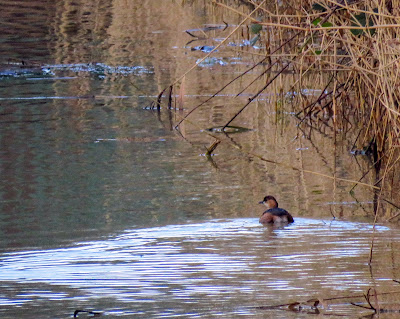
Buzzards are medium size raptors. They are mainly brown on top and pale underneath, with a variable amount of brown patches and speckles on the chest and under the wings, making different individuals look from very dark to very pale. On flight they look stocky, with broad wings, with a pale flash and dark wing tips. Adults have a dark terminal band on the tail. They mostly feed on small mammals (rabbits, rats, mice, voles), but they will also take birds, reptiles, amphibians, insects and earthworms, and also feed at carrion. Buzzards feed using different techniques. They can sit and wait on a perch, watching for prey or hover like a kestrel. Breeding pairs show their presence by soaring over their territories, often 'mewing', a very distinctive ke-uuw!. Buzzards are resident in the UK, but there are distinctive passage movements in mid April and Early September.
Regarded as 'vermin' by game keepers, buzzards had been exterminated from East Yorkshire by the mid 19th century, and they remained extremely rare birds in the Hull area through the 20th century. A combination of myxomatosis, which decimated rabbit populations, illegal killing and pesticide use were factors involved in the reduced Buzzard populations in the UK in the 20th century. Banning of organochlorine pesticides, reduced persecution and recovering rabbit populations meant that by the end of the 1960s, the Buzzard started to recover in the whole of the UK from strongholds in Wales, Scotland and Western England. By the 1990s they were rapidly recolonising lost ground, especially into the central and eastern counties. From the 2000 they become more regular in East Yorkshire. They are now regarded the most abundant raptor in the UK, showing their flexibility and adaptability to a range of habitats, from uplands to farmland and urban areas.
In his 'Birds of Hull' book (published in 2002), Richard Broughton details a few single individual sightings over Hull, the last in 1986 over Salt End, but concludes with a positive note: "Buzzards look set to reclaim their long-lost territories throughout the region within the next few decades, as long as they are left in peace". Indeed, in the last few of years, Buzzards have become urban birds in Hull. Previously, I would have single yearly sightings of birds flying over, or one right on the outskirts, like at Noddle Hill LNR, but records have become more regular and I have bumped onto several sitting in cemeteries and industrial estates in the city, as well as individuals soaring very regularly in the are over my garden. The fact that they are now seen year round also suggests that they are now breeding in the city and lets hope they flourish.
More information
RSPB Buzzard population trends.
Broughton, Richard K. Birds of the Hull Area.
Nelson, 1907. The Birds of Yorkshire.
Sim, I.M.W., L. Campbell, D.J. Pain & J.D. Wilson, 2000. Correlates of the population increase of Common Buzzards Buteo buteo in the West Midlands between 1983 and 1996. Bird Study, 47(2), pp.154-164.
Clements, R., 2002. The Common Buzzard in Britain. British Birds, 95, pp.377-383.

















































